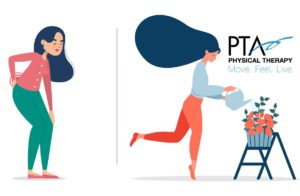Economic impacts of back pain
Over the last year, trying to decide the best way to stimulate and support the economy has been a hot topic. However, getting and keeping people out of back pain has not made any shortlists, even though chronic back pain results in huge expenditures for both the healthcare system and individuals alike. By taking care of your symptoms sooner rather than later, you can save yourself thousands of dollars each year, stay at work, and maintain a happier, healthier lifestyle.
Work limitations
Back pain is a leading cause of lost workdays per year, as well as work limitations. People with back pain are significantly more likely to miss at least one day of work per year as compared to peers who do not have symptoms. Globally, millions of workdays are lost each year due to back pain, negatively impacting wages and opportunities. Coupled with low back discomfort, this can lead to increased feelings of sadness, worthlessness, or hopelessness. Lastly, people with back pain are more inclined to retire sooner and enjoy their retirement less.
Healthcare expenditure
Not only are people with low back pain missing work more frequently, but they also are generally spending more on their healthcare. The median number of annual visits to a physician is almost twice as high for people with back pain than for those without. That’s twice as many days you could be spending outdoors or at work rather than at appointments! Additionally, people who seek care for back pain typically end up taking more medications than those who do not, which can result in negative side effects, poor medication interactions, and an additional cost. What’s even worse is that if a provider recommends surgery rather than a non-invasive treatment like physical therapy, costs will skyrocket even higher.
Back pain comes with its fair share of secondary health concerns as well. As a whole, the percentage of the population who experiences pain is more likely to be sedentary as compared to its pain-free counterparts. This leads to significantly increased risks of chronic diseases, including diabetes, obesity, hypertension, and many others. These conditions may lead to further pain, doctor visits, and costs, a cycle that can take a dangerous spiral very quickly.

After all that gloom and doom, there is good news too! Your physical therapist will have plenty of ideas and time to help you prevent this spiral of pain and spending. To prevent significant health and economic consequences associated with back pain, it’s best to see your physical therapist sooner rather than later. He or she will be able to meet you where you are and come up with a plan to help you return to doing what you love.
Source: Chronic Back Pain. (2019, February 13). Retrieved January 23, 2021, from https://hpi.georgetown.edu/backpain/




